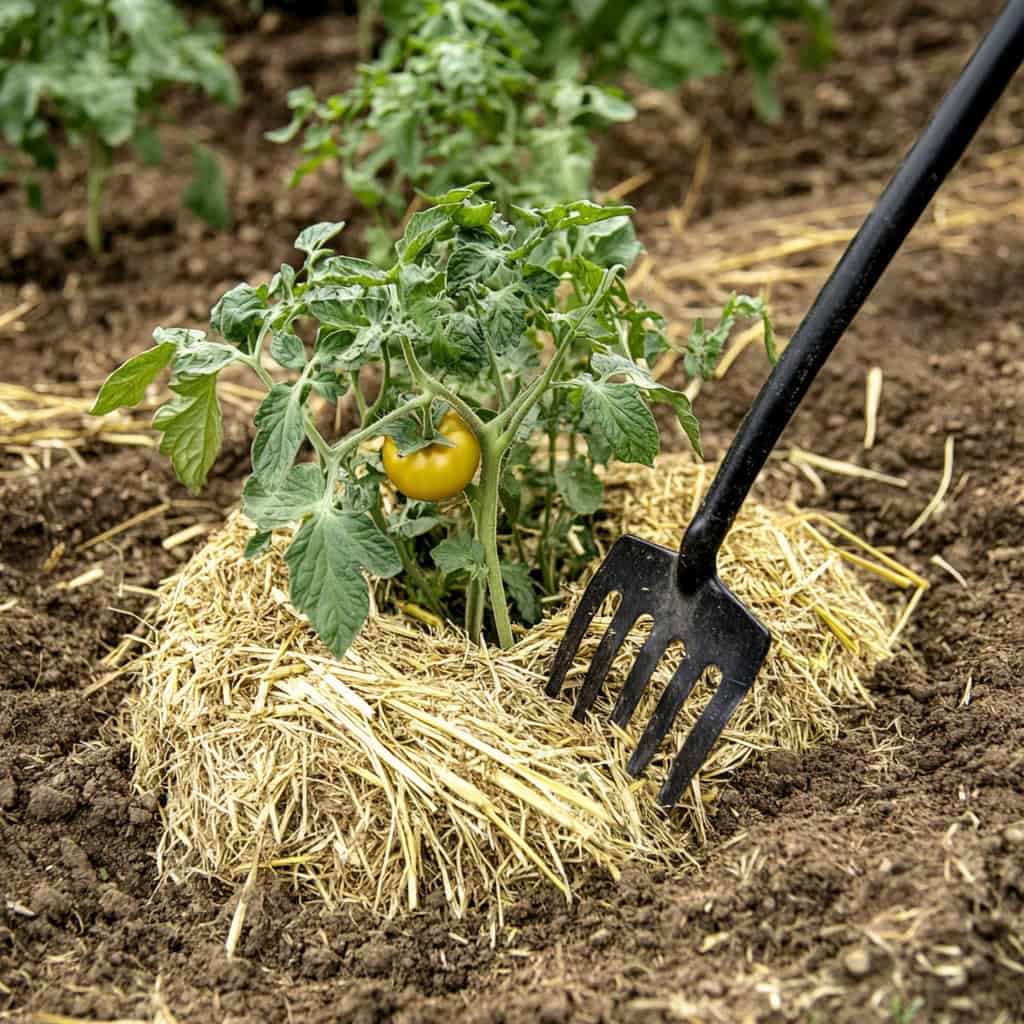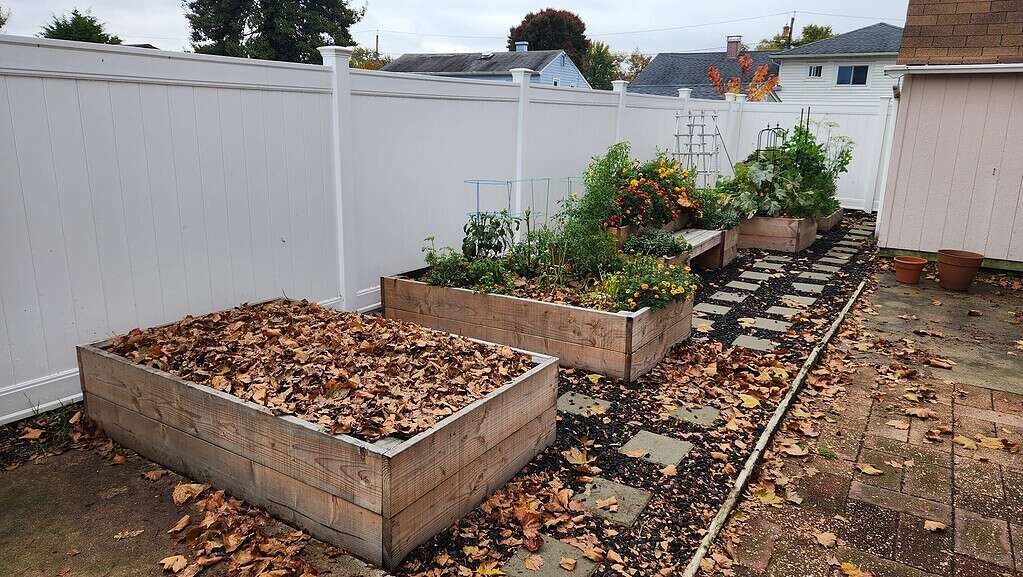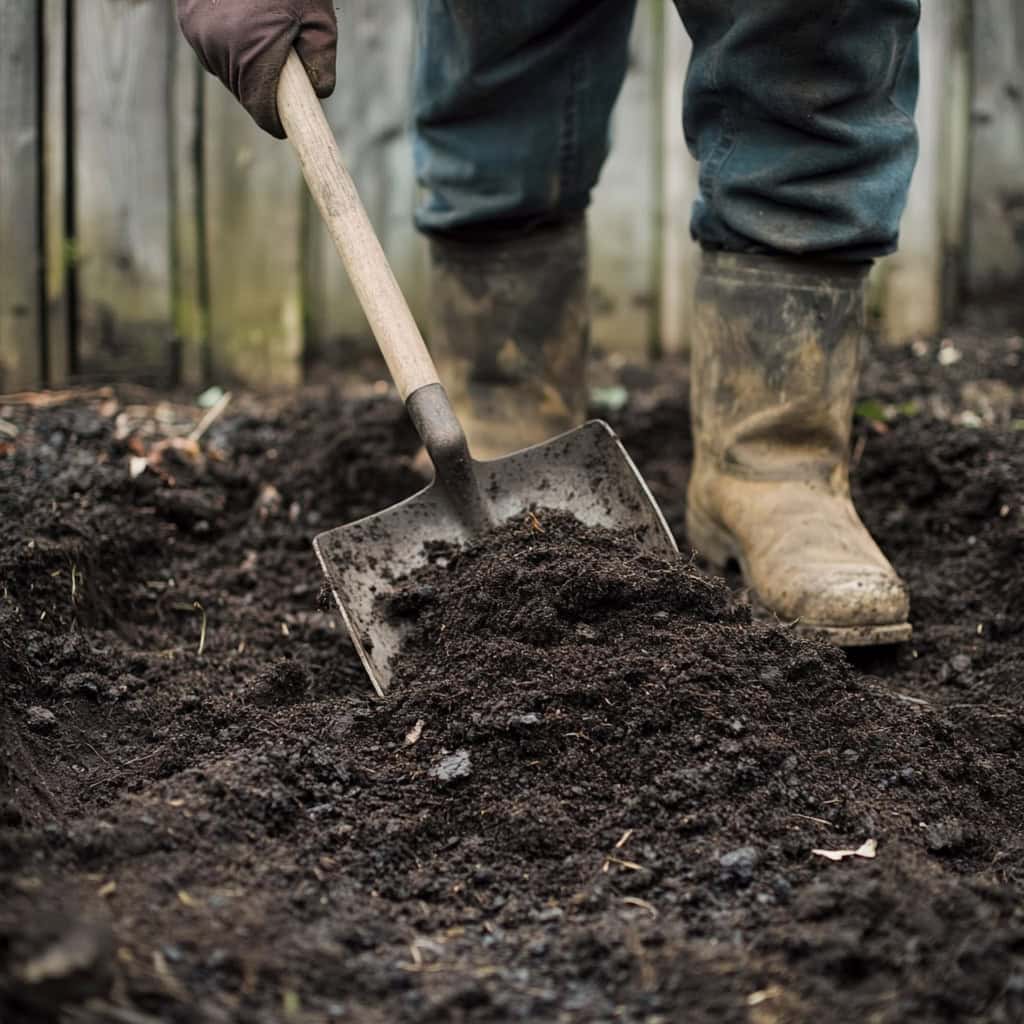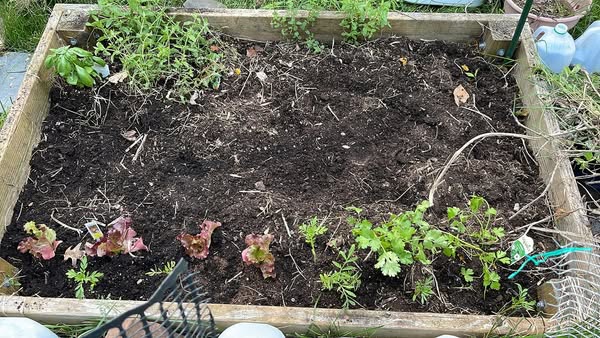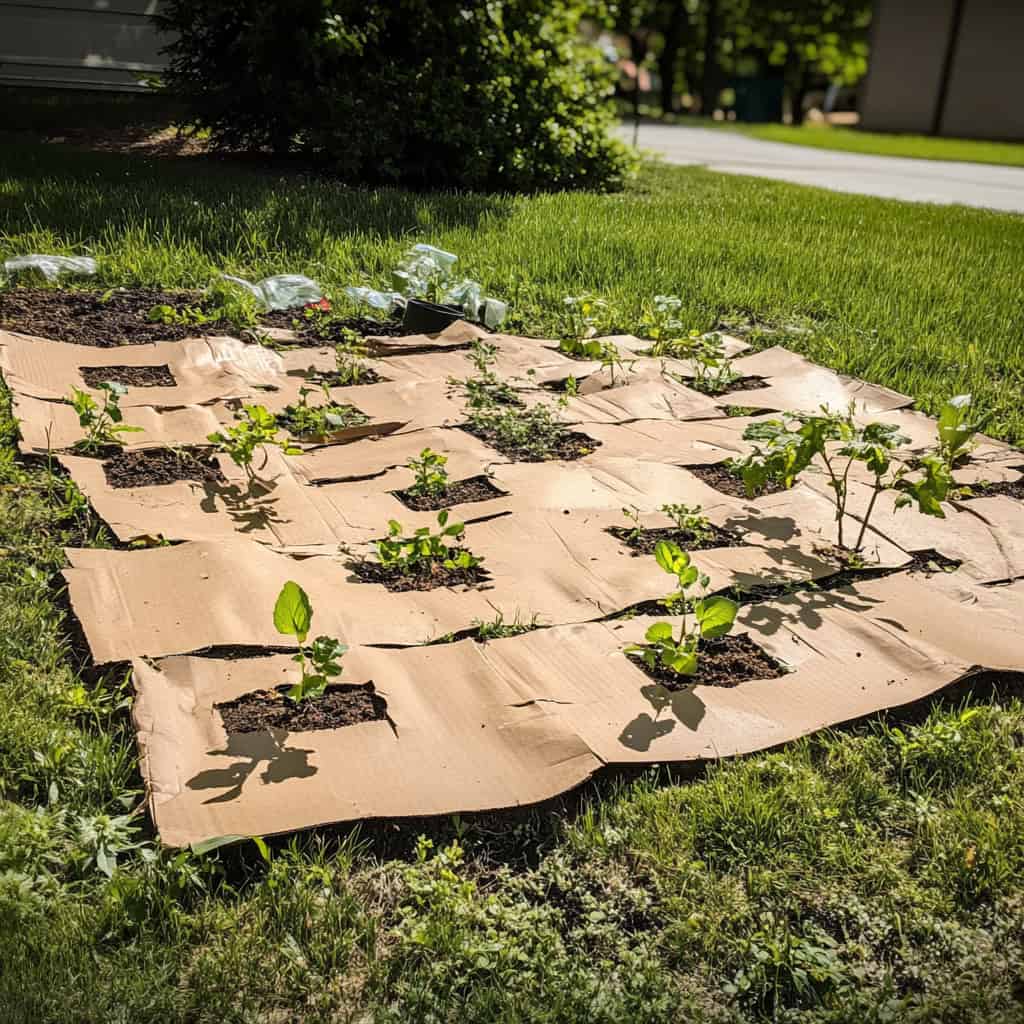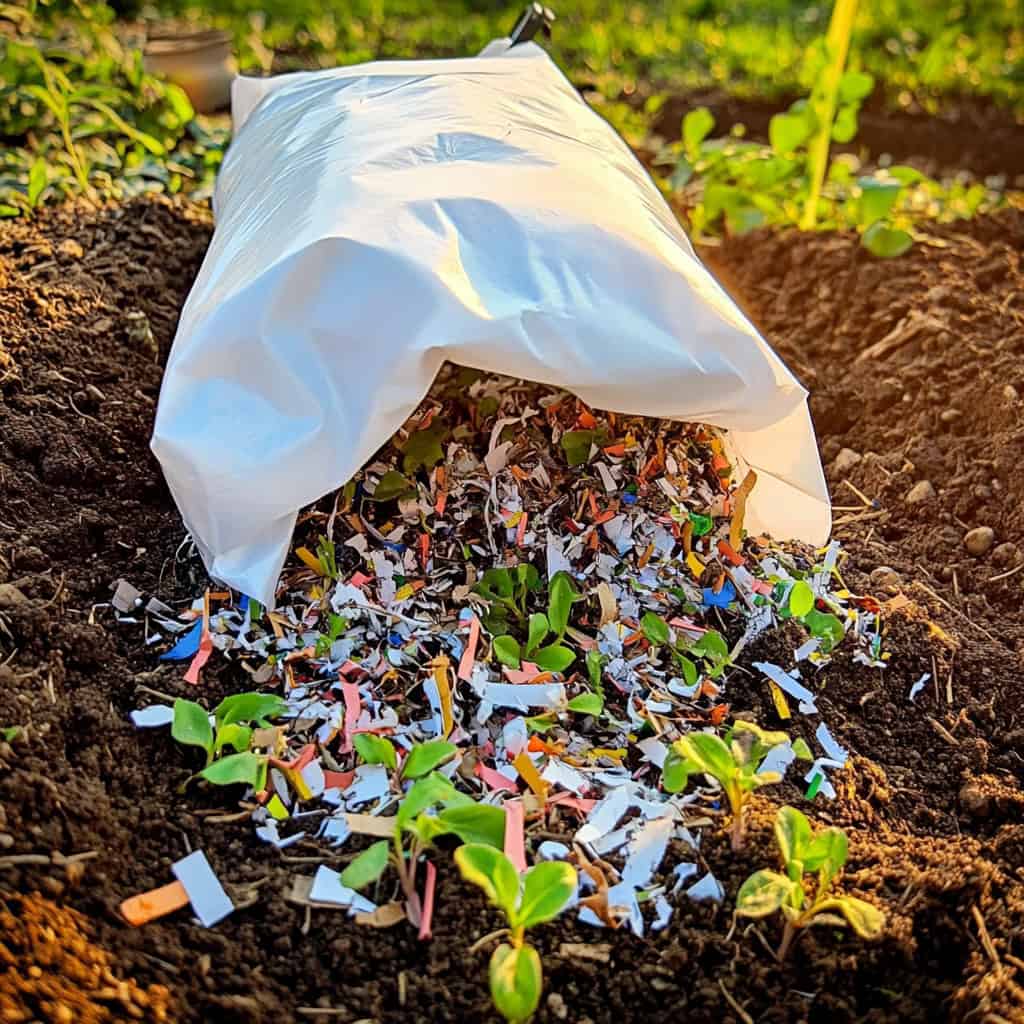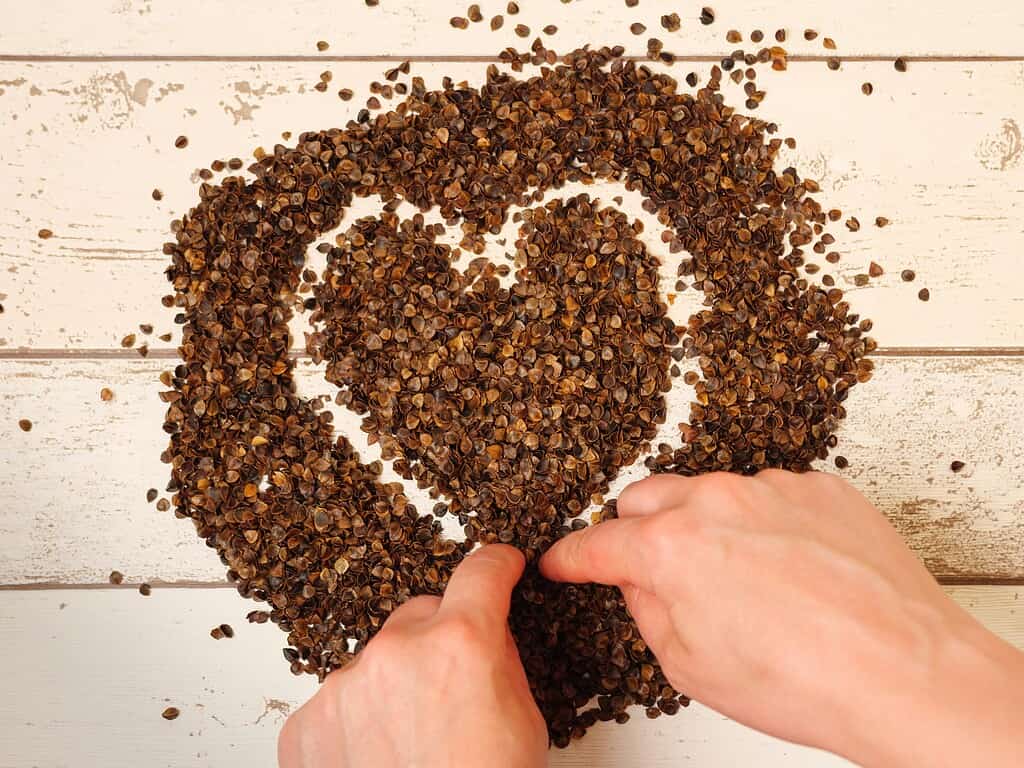Mulch is more than just a finishing touch in the garden – it’s a practical tool that helps plants grow stronger and soil stay healthier.
When used correctly, mulch can reduce water loss, limit weed growth, keep roots cool, and slowly improve soil quality as it breaks down.
For gardeners focused on organic and low-maintenance methods, mulch also supports long-term soil health without relying on synthetic inputs.
In this article, I’ll share 15 natural mulch options that work well in both vegetable and flower gardens.
Whether you need a cost-effective solution, something to enrich your soil, or a mulch that stays in place during heavy rain, you’ll find a variety of choices here to match your garden’s needs.
What Is Mulch (and Why Use It?)
Mulch is anything you put on top of the soil to help your plants and soil stay healthy.
You might use leaves, straw, wood chips, or even grass clippings. These materials sit on the surface and act like a blanket for your garden.
Mulch keeps moisture in the soil, so you don’t have to water as much. It also blocks sunlight, which helps stop weeds from growing. During hot days, mulch keeps the soil cooler, and when it’s cold, it helps hold in some warmth.
Over time, natural mulch breaks down and becomes part of the soil. This makes the soil better for your plants by adding nutrients and making it easier to dig. It also brings in earthworms and helpful microbes that support plant health.
Using mulch is one of the easiest ways to improve your garden without a lot of effort.
When you choose the right kind and spread it the right way, your soil gets stronger, your plants do better, and your garden becomes easier to care for.
1. Wood Chips or Bark Mulch
Wood chips and bark mulch are one of the most common types you’ll see in gardens. They come from tree trimmings or sawmills and are often used around flower beds, trees, and walkways.
People like them because they look tidy and do a good job of stopping weeds and holding in moisture.
When you lay wood chips on the soil, they help keep the ground cool and damp, which is good for plant roots. They also block sunlight, which keeps weed seeds from sprouting. These chips break down slowly, so they last a while.
But there are a few things to keep in mind. Don’t mix wood chips into the soil – just leave them on top. If you mix them in, they can take nitrogen from the soil, which your plants need.
Also, it’s better to avoid dyed mulch, since the color might come from chemicals that could be harmful.
If you can, get free wood chips from local tree-trimming services. Just watch for slugs, since they like to hide in damp wood chips.
2. Straw Mulch
Straw is a great mulch for vegetable gardens. It’s light, easy to spread, and helps keep the soil moist while stopping weeds. It also keeps the ground from getting too compacted, so water can soak in more easily.
Make sure you’re using clean, untreated straw. Avoid hay, since it often has weed seeds that can cause problems later.
Straw comes from the stalks left behind after harvesting grains, so it’s usually free of seeds if it’s from a good source.
When you use straw, place it between your plants, not directly against their stems or leaves. This helps prevent mold or disease.
Over time, straw will break down and add organic matter to your soil, but you might need to add more during the growing season, especially after heavy rain or wind.
3. Hay
Hay might seem similar to straw, but they have different effects in the garden.
While straw is mostly carbon-rich and light, hay is more nutrient-dense because it includes the whole plant – leaves, stems, and seeds. That means it can feed your soil more quickly as it breaks down.
The tradeoff is that hay often carries weed seeds or traces of herbicides from the field where it was grown. These can harm your garden plants, so it’s very important to know the source before you use hay.
If the hay is clean and safe, you can spread it like straw. Just make sure it doesn’t touch your plants directly. It holds moisture well and breaks down fast, but unless you’re completely confident it’s untreated, it’s usually better to stick with straw.
4. Grass Clippings
If you mow your own lawn, grass clippings can be a useful mulch that costs nothing.
They’re packed with nutrients and help keep the soil moist and free of weeds. They’re especially helpful in vegetable gardens where the soil needs frequent feeding.
Before spreading, it’s best to let the clippings dry for a day or so. Wet clippings can clump and form a barrier that keeps water from soaking in. Spreading them in thin, dry layers helps them break down evenly and prevents odor.
Only use clippings from lawns that haven’t been treated with herbicides or pesticides. Also, avoid using clippings from diseased grass, since that could spread problems in your garden.
When used with care, grass clippings are a simple and effective way to return nutrients to your soil.
5. Shredded Leaves
Shredded leaves are one of the most practical and nutrient-rich mulch options you can use, especially in the fall when they’re easy to collect.
When spread over garden beds, they help insulate the soil during cold months and gradually break down to add organic matter, improving both drainage and soil structure.
The key is to shred them before using. Whole leaves can form a thick, matted layer that blocks water and air from getting to the soil.
Shredding makes them easier to spread and helps them decompose more evenly. You can run over dry leaves with a mower or use a leaf shredder if you have one.
This type of mulch is especially good for flower beds, fruit bushes, and winter vegetable crops. Just make sure the leaves are free from disease before you use them, as infected leaves can spread fungal issues.
Once shredded and spread properly, they offer a steady supply of nutrients and help build long-term soil health.
6. Compost Mulch
Using compost as mulch gives your soil an instant boost in nutrients and organic matter.
Whether you make your own or buy it, compost is full of beneficial microbes and broken-down plant material that can improve soil quality almost right away.
It’s a good choice for gardeners who want to feed their soil while also keeping weeds down and moisture in.
To use compost as mulch, spread a layer directly on the soil surface around your plants. It works well in both vegetable beds and flower gardens. Unlike other mulches that mainly act as a cover, compost actively feeds the plants as it slowly mixes into the soil.
One thing to keep in mind is that high-quality compost can be a bit more expensive, especially if you're covering a large area.
Also, you might notice a few weed seeds popping up in the compost layer, depending on how thoroughly it was processed. Still, it’s one of the best choices for enriching your soil naturally.
7. Unfinished Compost
If you have compost in your compost bin that hasn’t fully broken down, you can still put it to good use as a mulch.
While it’s not ideal for areas where looks matter, unfinished compost works well in back beds or around trees and shrubs, where its rough texture doesn’t matter much.
Because it hasn’t decomposed all the way, some of the materials—like vegetable scraps or bits of leaves—will still be visible.
These will break down over time and add nutrients to the soil. However, some of those materials might be too strong for sensitive plants, so it’s better to avoid using unfinished compost directly around delicate seedlings or young plants.
If you’re looking for a budget-friendly option and have some extra compost that’s not quite ready, this can be a helpful way to cover soil, suppress weeds, and eventually feed your garden.
8. Stable Sweepings
If you live near a farm or stable, you might be able to get stable sweepings for free or at a low cost.
These are the bits and pieces swept up from barn floors, usually a mix of straw, hay, manure, and dirt. When handled properly, they make a nutrient-rich mulch that helps improve soil over time.
Fresh manure in the sweepings can be too strong for garden plants, so you’ll want to let it sit and compost for a couple of months before using it. Once aged, it becomes much safer and adds a slow, steady supply of nutrients to the soil.
Stable sweepings are best used in non-decorative areas, like fruit trees, back beds, or large vegetable plots.
They’re a great option if you’re working with a limited budget and don’t mind a more rustic look in some parts of your garden.
9. Pine Needle Mulch
Pine needles, also called pine straw, are a long-lasting mulch that works especially well in areas with acid-loving plants.
As they slowly break down, they gently increase soil acidity, making them a good match for crops like blueberries, rhododendrons, and azaleas.
One of the benefits of pine needle mulch is that the needles naturally lock together, which helps them stay in place even during heavy rain or wind. They’re also light and easy to spread, and they don’t compact the soil like some heavier mulches can.
While fresh pine needles are a bit acidic, they become more neutral over time as they dry and decompose.
This makes them safe to use around a wider range of plants, especially in well-drained garden beds. If you have access to fallen needles, they’re an easy and effective mulch that doesn’t need frequent replacing.
10. Cocoa Shell Mulch
Cocoa shell mulch is made from the outer shells of cocoa beans and is often used in decorative gardens because of its dark color and pleasant scent.
It does a good job of keeping the soil moist, controlling weeds, and slowly adding organic matter as it breaks down. Many gardeners also like that it attracts earthworms, which help improve the soil.
Even though it looks and smells nice, cocoa shell mulch comes with some downsides. It can be more expensive than other options and might develop surface mold if it stays damp for too long.
One of the biggest concerns is that it's toxic to pets, especially dogs, because it contains theobromine — the same compound found in chocolate.
If you don’t have pets and are looking for a clean, long-lasting mulch that also improves your soil, cocoa shells can work well, especially in small or ornamental garden areas.
Just make sure to apply it in a thin layer and allow some airflow to prevent mold from forming on top.
11. Newspaper
Newspaper can be an affordable and practical mulch, especially when you're trying to stop weeds.
It works by blocking sunlight from reaching the soil, which prevents weed seeds from sprouting. As newspaper breaks down, it adds carbon and organic matter to the soil.
To use it effectively, lay down several sheets and soak them with water to help them stick together and stay in place.
It’s best to cover the newspaper with another organic mulch like straw or compost to weigh it down and help it blend into the garden.
This also improves its ability to hold moisture and prevents it from drying out or blowing away.
Avoid using glossy inserts or anything with colored ink, as those may contain chemicals that aren’t safe for your garden. While newspaper is useful, it can sometimes attract rodents, so keep an eye out in areas where that's a concern.
12. Cardboard Sheets
Cardboard is another mulch option that’s especially good at blocking weeds and holding moisture.
It’s thicker than newspaper and lasts longer, so it works well as a base layer under other types of mulch. If you're starting a new bed or trying to smother grass, cardboard can be one of the easiest ways to get started.
Before using it, remove any staples, tape, or stickers, and stick to plain, non-coated cardboard. Lay it flat over the area you want to mulch and water it down so it starts to soften and stick to the soil.
Then cover it with something like wood chips, straw, or compost to hold it in place and improve the look.
Cardboard works best when it’s used underneath another mulch. On its own, it can look messy as it starts to break apart, and it may blow away or curl up if left uncovered. But as a foundation layer, it’s effective and simple.
13. Shredded Paper Bags
If you’ve got paper bags lying around, you can shred them and use them as mulch, especially in non-food garden beds.
They break down much like newspaper, helping hold moisture, block weeds, and add organic matter to the soil over time.
To prepare them, remove any printed labels, glue sections, or coated areas that might have chemicals. The safest choice is plain, unprinted brown paper bags.
Once shredded, they can be spread in a thin layer and then topped with another mulch like straw or compost to help keep them in place.
This type of mulch works well in flower beds or pathways where you want a short-term mulch that will eventually return to the soil. It’s not the most attractive option, but it’s a useful way to reuse materials you already have.
14. Seaweed Mulch
Seaweed is a natural mulch that’s full of nutrients and works especially well in coastal areas where it’s easy to collect.
It adds trace minerals to the soil, holds in moisture, and even helps keep some pests away. Because it breaks down quickly, it also feeds the soil faster than many other mulches.
Before you use it, rinse off any extra salt to avoid affecting your plants or soil. Then spread it loosely around your garden beds.
Seaweed won’t compact, so water and air can still move through it easily. It also doesn’t carry weed seeds like hay or straw sometimes can.
Seaweed is best used in gardens where you want fast soil improvement and have regular access to clean sources. It breaks down fairly quickly, so you may need to replace it more often, but the boost it gives your plants is well worth it.
15. Buckwheat Hulls
Buckwheat hulls are a lesser-known mulch, but they’re very effective in small garden areas. They’re lightweight, resist compacting, and help keep moisture in the soil.
As they break down, they attract earthworms and improve soil structure, making them a great choice for anyone focused on long-term soil health.
One of their strengths is that they’re neat-looking and easy to apply, so they work well in beds where appearance matters.
However, they’re not always easy to find and may cost more than other mulch options, especially in large amounts.
Because they’re lightweight, buckwheat hulls are best used in areas sheltered from strong wind or combined with a base mulch to keep them in place.
If you're looking for a clean, soil-friendly mulch that also supports beneficial insects, they’re a smart option when available.
Start with one kind of mulch that fits your garden, and see how much easier things get.
Choosing the right mulch really can change how your garden grows—and how much time you spend keeping it all going.
Whether you're trying to build up your soil, save water, keep weeds down, or just make use of what you’ve already got lying around, there’s a mulch out there that can help.
Some of the classics, like wood chips and straw, are popular for a reason.
But there are also some fun, lesser-known options (like seaweed or buckwheat hulls) that can be just as useful depending on your setup. It all comes down to matching your mulch to your garden’s needs and your goals.
Personally, I love using organic mulches because they do double duty: they help right away and keep building healthier soil as time goes on.
Whatever kind of garden you’re working with – vegetables, flowers, shrubs, or trees – mulching is one of those simple things that makes a big impact.
It’s less fuss in the long run and helps keep your plants thriving through the seasons.
Frequently Asked Questions (FAQs)
Got questions about mulching? Here are some quick answers to help you make the best choice for your garden.
What is the best mulch for vegetable gardens?
Straw is one of the best choices for vegetable gardens because it's light, easy to spread, and helps keep weeds down while holding in moisture. Grass clippings and shredded leaves also work well, especially when you want to add nutrients to the soil.
How often should I replace garden mulch?
Most organic mulches need to be refreshed once or twice a year, depending on how fast they break down and how much gets moved by wind or rain. Softer materials like straw and grass clippings break down quickly, while wood chips and pine needles last longer.
Can I mix different mulch types together?
Yes, you can combine mulch types to get the benefits of each. For example, you can use cardboard or newspaper as a base layer to block weeds and then cover it with straw or wood chips for a cleaner look and better moisture control.
Is it safe to use dyed mulch around food plants?
It’s better to avoid dyed mulch in food gardens, especially if you're not sure what type of dye was used. Some colored mulches may contain chemicals that could leach into the soil. Stick with untreated, natural mulch around fruits and vegetables.
Which mulch helps improve soil the fastest?
Compost is the fastest at improving soil because it's already broken down and packed with nutrients. Shredded leaves and seaweed also break down quickly and add a lot of value to the soil in a short time.
Ready To Transform Your Garden?
Are you looking for the best way to layout your garden beds? Maybe you're feeling a bit stuck on how to make the most of your space?
We’ve got you covered! Check out our 101+ Garden Bed Layout Ideas for your next raised bed project. This guide is filled with creative and practical ideas that can help you design a garden that fits your style, whether you’re just starting out or have been gardening for years.
Get your copy today and get inspired to bring your gardening dreams to life.



